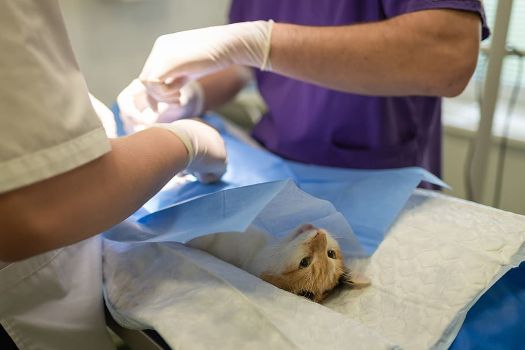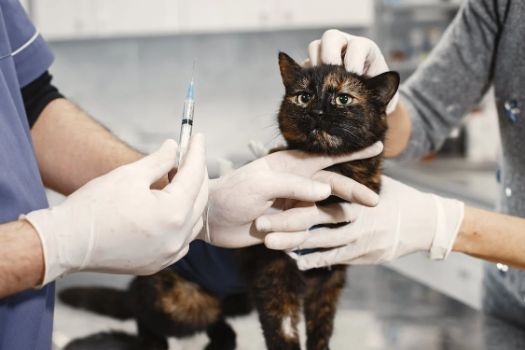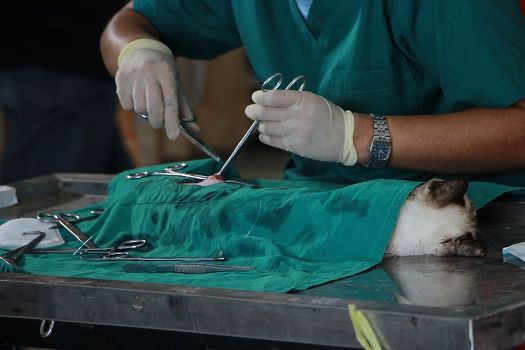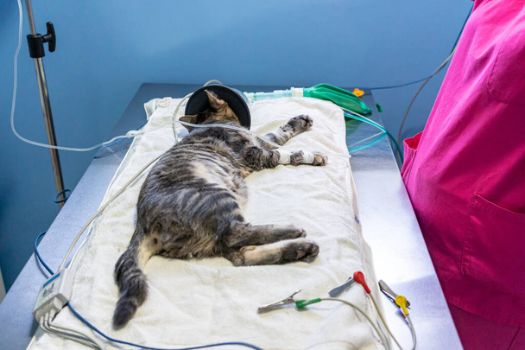The cost to neuter or spay a cat can vary significantly depending on various factors. On average, neutering a male cat can range from $50 to $200, while spaying a female cat, a more complex surgery, can cost between $200 and $500 in the United States. These prices can fluctuate based on the region, the type of clinic, and the cat’s health condition. Some low-cost clinics or programs may offer these services for less, while private vet practices may charge more. It’s always a good idea to call around and compare prices in your local area.

Neutering vs. Spaying a Cats
Neutering and spaying are both surgical procedures performed on cats to prevent them from reproducing. Neutering, also known as castration, is performed on male cats and involves the removal of the testicles. Spaying, also referred to as ovariohysterectomy, is performed on female cats and involves the removal of the ovaries and uterus. Both procedures are commonly used for population control and to prevent certain health and behavioral issues.
Factors that Affect Neutering or Spaying Costs
Cat Size & Health
The size and health of a cat can affect the cost of neutering or spaying. Larger cats may require more anesthesia, which can increase the cost. Additionally, extra care or medications might be needed if a cat is in poor health, which can also add to the cost.
Previous Health Conditions
Cats with pre-existing health conditions may require additional tests or treatments before surgery. This can increase the overall cost of the procedure. For instance, additional cardiac monitoring might be necessary if a cat has a heart condition.

Location
The cost of neutering or spaying can vary significantly depending on the location. In urban areas or places with a high cost of living, vet services are generally more expensive. Additionally, some regions may have more low-cost clinics or subsidies available, which can reduce the cost.
Vet Fee
Different vets charge different fees for their services. Some vets may charge more due to their level of expertise or the quality of the facilities. Some vets also include post-operative care in their fee, while others may charge extra. It’s always a good idea to ask for a detailed quote beforehand to understand what’s included in the fee.
What’s Included in the Cost of Spaying or Neutering a Cat?
The cost of spaying or neutering a cat usually includes several key components.
Pre-Surgical Exam
This initial examination ensures the cat is healthy enough for surgery.
Anesthesia
This is used to keep the cat unconscious and pain-free during the procedure. The cost often includes the induction to start anesthesia and the maintenance to keep the cat asleep during surgery.
The Surgery Itself
This is the cost of the actual procedure to neuter (remove the testicles) or spay (remove the ovaries and uterus) the cat.
Pain Medication
Post-operative pain medication is typically provided to ensure the cat’s comfort after the surgery.

Post-Surgical Care
This includes monitoring the cat while it wakes from anesthesia and providing care instructions at home.
Suture Removal
If non-dissolvable sutures are used, there will be a follow-up appointment for removal.
Remember that what’s included can vary between vets or clinics, so it’s always a good idea to ask for a detailed breakdown of costs when you’re getting a quote.
Benefits of Spaying or Neutering a Cat
Population Control
Spaying or neutering helps control the cat population by preventing unwanted litter, thus reducing the number of cats in shelters and on the streets.
Prevents Health Issues
Spaying a female cat can prevent uterine infections and breast tumors, which are malignant in about 50% of cats. Neutering a male cat prevents testicular cancer and certain prostate problems.
Reduces Unwanted Behaviors
Neutered male cats are less likely to mark their territory with strong-smelling urine, roam away from home in search of a mate, or engage in fighting with other males. Spayed females won’t go into heat, eliminating behaviors such as yowling and urine marking.

Potentially Longer Lifespan
Cats that are spayed or neutered often have longer lifespans, partly because they’re less likely to roam outdoors (where they could get injured or contract diseases) and less likely to develop certain types of cancers.
Cost-Effective
The cost of spaying or neutering a cat is often less than the cost of raising kittens for a year, making it a financially responsible choice for pet owners.
How can I Help my Cat recover from Neutering and Spaying?
- Provide a Quiet and Comfortable Space: After surgery, your cat will likely be groggy and tired. Provide a quiet, warm, comfortable space for them to rest and recover.
- Limit Activity: It’s important to limit your cat’s activity for a few days to a week after surgery to prevent complications. This may involve confining your cat to a small room or crate.
- Monitor the Incision Site: Check the site daily for signs of infection, such as redness, swelling, or discharge. Avoid bathing your cat until the incision has fully healed.
- Follow Vet Instructions for Pain Management: Your vet will likely provide pain medication for your cat. Be sure to administer it as directed and watch for signs of pain, such as changes in behavior or appetite.
- Keep the Elizabethan Collar On: Also known as the “cone of shame,” this prevents your cat from licking or biting the incision site, which can lead to infection.
- Offer Small Meals: Your cat’s stomach might be upset after anesthesia, so offer small meals at first. If your cat doesn’t want to eat or vomiting or diarrhea occurs, contact your vet.
- Monitor for Behavioral Changes: If your cat seems excessively lethargic, refuses to eat, or seems in pain, contact your vet immediately.

Frequently Asked Questions
Is it ethically wrong to Neuter or Spay Cats?
Neutering or spaying cats is generally considered ethical and responsible. These procedures help control the cat population, preventing the euthanization of unwanted cats in shelters. They also prevent health issues and behaviors that can be problematic for cats and their owners.
Does Cat Insurance Cover Neutering or Spaying Costs?
Whether cat insurance covers neutering or spaying costs depends on the specific policy. Some pet insurance plans cover these procedures as part of a wellness or preventative care package, while others do not. Always check the specifics of your insurance policy.
Can I get my Cat Neutered or Spayed for Free?
Yes, in some areas, you can get your cat neutered or spayed for free or at a low cost. Various organizations and programs offer these services to promote population control. Check with local animal shelters, rescue organizations, or your local government for available programs.
Are Spayed or Neutered Cats more costly than Other Dogs?
The cost of owning a cat doesn’t significantly increase after spaying or neutering. These procedures can reduce costs in the long run by preventing health issues and unwanted litter. Comparing costs between cats and dogs depends on various factors like breed, size, health, and lifestyle needs.
Why is Spaying More Costly than Neutering?
Spaying is usually more expensive than neutering because it’s more complex. It involves abdominal surgery to remove the ovaries and uterus in females while neutering in males is a simpler, less invasive procedure.
What’s the Right Age to Neuter or Spay a Cat?
The general recommendation is to spay or neuter cats between 4-6 months of age, but it can safely be done in kittens as young as 8-12 weeks. Early spaying or neutering can prevent unwanted behaviors and health issues. However, the timing can vary based on breed, health, and lifestyle. Always consult with your vet.
How much does it cost to Spay or Neuter a Dog?
The cost to spay or neuter a dog can vary greatly depending on the size, health, and sex of the dog, as well as location and specific veterinary practice. On average, these procedures can range from $200 to $500. Always check with your local vet for an accurate quote.